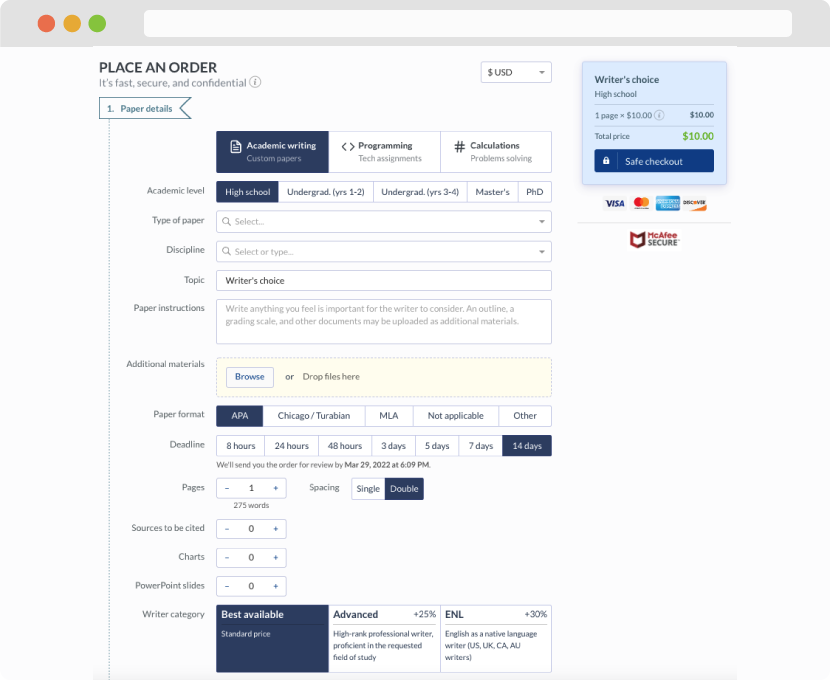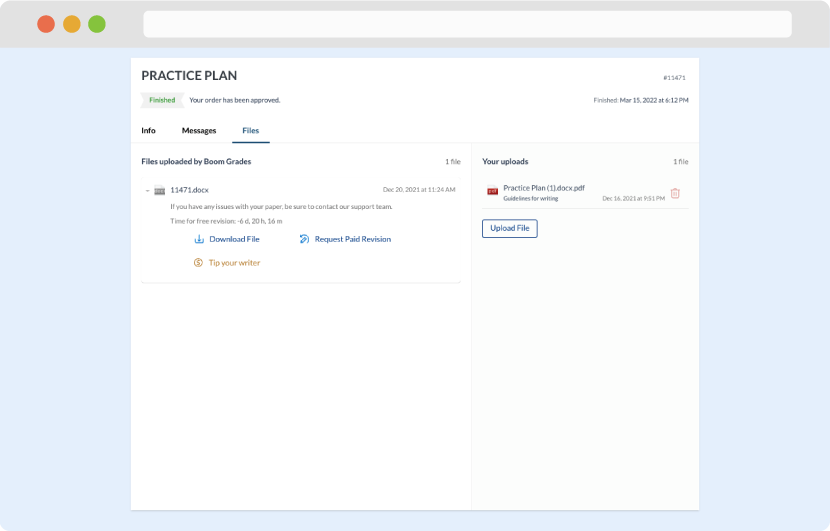Bloom’s Taxonomy
(based on the 2001 revisions)
Consistent with SLOs
Remembering Understanding
Exhibit
Demonstrate
memory of
understanding
previously
of facts and
learned
ideas by
material by
organizing,
recalling facts, comparing,
terms, basic
interpreting,
concepts, and giving
answers.
descriptions,
and stating
main ideas.
Arrange
Choose
Cite
Count
Define
Describe
Enumerate
Identify
Label
List
Locate
Match
Name
Order
Outline
Quote
Read
Recall
Recognize
Relate
Repeat
Report
Reproduce
Select
Show
State
Tabulate
Tell
Write
Associate
Classify
Compare
Contrast
Describe
Differentiate
Discriminate
Discuss
Distinguish
Estimate
Exemplify
Explain
Express
Extend
Generalize
Give examples
Illustrate
Infer
Interpret
Locate
Paraphrase
Predict
Recognize
Restate
Review
Rewrite
Summarize
Translate
Cognitive Domain
COs or SLOs
Consistent with COs
Applying
Analyzing
Evaluating
Creating
Solve
Examine and
Present and
Compile
problems in
break
defend
information in
new situations information
opinions by
a different
by applying
into parts by
making
way by
acquired
identifying
judgments
combining
knowledge,
motives or
about
elements in a
facts,
causes. Make
information,
new pattern
techniques,
inferences and validity of
or proposing
and rules in a
find evidence
ideas, or
new solutions.
different way. to support
quality of
generalizations. work based
on a set of
criteria.
Apply
Analyze
Appraise
Argue
Calculate
Arrange
Ascertain
Arrange
Change
Attribute
Assess
Assemble
Complete
Calculate
Choose
Categorize
Construct
Categorize
Conclude
Combine
Demonstrate
Classify
Coordinate
Compile
Develop
Compare
Criticize
Compose
Employ
Conclude
Critique
Construct
Examine
Connect
Debate
Correlate
Execute
Contrast
Decide
Create
Illustrate
Deconstruct
Defend
Design
Implement
Deduce
Detect
Detect
Interpret
Detect
Estimate
Develop
Modify
Determine
Evaluate
Devise
Order
Differentiate
Grade
Formulate
Predict
Discriminate
Hypothesize
Generalize
Prepare
Distinguish
Judge
Generate
Produce
Examine
Justify
Integrate
Relate
Infer
Measure
Invent
Report
Organize
Monitor
Manage
Restate
Relate
Rank
Modify
Revise
Rate
Organize
Solve
Recommend
Plan
Translate
Reframe
Prepare
Use
Resolve
Produce
Review
Propose
Score
Reconstruct
Select
Reorganize
Support
Revise
Test
Specify
Validate
Summarize
Verbs in green font appear in more than one level and is dependent on the intent of the CO or SLO in which it is used.
Imitation
Copy
Follow
Imitate
Mimic
Repeat
Replicate
Show
Bloom’s Taxonomy
(based on the 2001 revisions)
Psychomotor Domain (Dave, as cited in Billings & Halstead, 2016; Iwasiw et al., 2020)
Consistent with SLOs
SLOs or COs
Consistent with COs
Manipulation
Precision
Articulation
Naturalization
Assemble
Complete
Adapt
Alter
Demonstrate
Consistent
Alter
Change
Execute
Demonstrate
Change
Create
Follow
Perform Accurately
Combine
Design
Display
Precise
Connect
Execute
Implement
Show
Construct
Invent
Manipulate
Develop
Revise
Move
Display
Vary
Perform
Integrate
Recreate
Modify
Revise
Consistent with SLOs
Receiving
Responding
Accept
Agree
Admit
Answer
Ask
Comply
Attend
Conform
Focus
Discuss
Choose
Examine
Listen
Express
Listen for
Help
Listen to
Participate
Locate
Perform
Observe
React
Pay Attention
Read
Recognize
Recall
Select
Relate
Recite
Report
Respond
State willingness
Try
Verbalize
Affective Domain
SLOs or COs
Valuing
Assert
Assist
Attempt
Choose
Complete
Demonstrate
Differentiate
Disagree
Explain
Follow
Form
Help
Initiate
Join
Justify
Propose
Refute
Report
Share
Support
Volunteer
Consistent with COs
Organizing
Characterizing
Adhere
Act
Alter
Assert
Arrange
Change
Balance
behavior
Combine
Commit
Display
Consistent
Defend
Display
Explain
Discriminate
Express
Influence
Formulate
Internalize
Generalize
Judgement
Integrate
Perform
Order
Practice
Resolve
Propose
Synthesize
Qualify
Question
Reorder
Priority
Resolve
Revise
Solve
Verify
Verbs in green font appear in more than one level and is dependent on the intent of the CO or SLO in which it is used.
Anderson, L. W., & Krathwohl, D. R. (2001). A taxonomy for learning, teaching, and assessing: A revision of Bloom’s
taxonomy of educational objectives. Longman.
Bastable, S. (2019). Nurse as educator: Principles of teaching and learning for nursing practice (5th ed.). Jones & Bartlett
Learning.
Billings, D. M., & Halstead, J. A. (2016). Teaching in nursing: A guide for faculty (5th ed.). Elsevier.
Bloom’s Taxonomy
(based on the 2001 revisions)
Iwasiw, C. L., Andrusyszyn, M.A., & Goldenberg, D. (2020). Curriculum development in nursing education (4th ed.). Jones
& Bartlett Publishers.
RAM1: Developing Course Elements
C920 Course Module Template
A1. Course Description
Module #1
A1a. Module
Summary
A2. Module Title
A3. Course
Objectives
A4. Student
Learning Outcomes
A5. Module Topics
A6. Learning
Resources
A7. Learning
Activity
A7a. ContextBased Scenario
Details
Module #2
A1a. Module
Summary
A2. Module Title
A3. Course
Objectives
PAGE 1
RAM1: Developing Course Elements
C920 Course Module Template
A4. Student
Learning Outcomes
A5. Module Topics
A6. Learning
Resources
A7. Learning
Activity
A7a. ContextBased Scenario
Details
PAGE 2
RAM1: Developing Course Elements
C920 Template and Paper Guidelines
A1. Course Description
Mention all 8 topics that you developed in C919. Also refer to the
educational principles/academic standard you mentioned in C919
(QSEN, Quad Council, etc.) – one or two sentences is all that is
needed. There is no word limit for this section.
When you have completed the course description, hit “Return” or
“Enter” and you can put that APA reference for the
standard/principle here in the box itself, you do not need a
separate reference page for the template.
Module #1
A1a. Module
Summary
What is this module about?
A2. Module Title
Can copy/paste from C919 or develop a new title
A3. Course
Objectives
Will do TWO unique Course Objectives for each module.
Course objectives start with:
By the end of the course,…..
There is a copy of Blooms’ taxonomy at the very bottom of the task
directions, and also a link to the taxonomy on page 23 of the Course
Materials.
Explanations of how to write SMART COs/SLOs starts on page 23 of
the Course Materials
A4. Student
Will do TWO unique Student Learning Outcomes for each module.
Learning Outcomes Student learning outcomes start with:
By the end of the module…..
A5. Module Topics
Describe at least two topics that could be covered in this module, and
how each topic helps students meet the COs/SLOs
A6. Learning
Resources
At least two – must have two different types (for example, one journal
article and one Youtube video, not two journal articles)
Learning resources are those resources that you would provide your
students to help them understand the module topics
A7. Learning
Activity
Write out everything students will need to do. For example:
Students will be assigned in groups of 4 to Zoom breakout rooms.
Each group will work on the following case study:
.
PAGE 1
RAM1: Developing Course Elements
C920 Course Module Template
You will need to discuss how this activity ‘encourages reflective
practice’. One suggestion is to have students, at the end of the
activity, spend some time journaling what they learned and how they
felt during the activity.
A7a. Context-Based Leave this blank for Module 1
Scenario Details
Module #2
A1a. Module
Summary
A2. Module Title
A3. Course
Objectives
Must be two different course objectives than those used in Module 1
A4. Student
Must be two different student learning outcomes than those used in
Learning Outcomes Module 1
A5. Module Topics
A6. Learning
Resources
A7. Learning
Activity
This learning activity needs to be a context-relevant scenario – we
recommend either a case study or a discussion board with prompts.
Don’t forget that reflective component! Write it all out in this box.
A7a. Context-Based Copy what you have developed for A7 and paste it here.
Scenario Details
Paper (no standard template provided for paper):
B1. Identify which module you are discussing. Describe the phases of the ADDIE model.
Then, describe how the applicable phases (usually the first two phases) influenced the
design and development of the identified module.
Discussion of the ADDIE model starts on page 27 of the Course Materials
B2. What are at least two challenges in online classes that could hinder the achievement of
COs/SLOs? Some examples include time management, lack of face to face contact, etc. –
and then describe how you as an ANE could address those challenges – popup reminders in
the online classroom, Zoom meetings, etc.
PAGE 2
RAM1: Developing Course Elements
C920 Course Module Template
B3. Identify one of the four SLOs you developed in both modules. Then, tie in an established
learning theory to that SLO. Any learning theory can be tied in to any SLO! If you need a
refresher on learning theories, they are discussed in Chapter 14 of the Billings and Halstead
text.
B3a. Any learning theory can be adapted to an online environment. For example,
constructivism is adapted to an online environment because students bring varied life
experiences and knowledge to online courses.
B4. Identify two of the learning resources you developed in A6 (any two from either module).
Talk about why each is ‘intellectually stimulating’ and ‘best suited’ – whenever you see key
phrases like this, try to use them in your paper. This section might need references.
For example: The Healthy People 2030 website is best suited for this module because it
provides the most up to date information on social determinants of health. This site is
intellectually stimulating because it uses a variety of strategies – colors, easily navigated
pages, etc. – to enhance the experience of the user.
B5. Identify the learning activity from A7 and justify using this activity. Pretend that your
Dean has asked you why you chose this learning activity to use with your students.
You will need to discuss:
Specific skills that the activity develops
How this activity promotes learning and facilitates student engagement
How the activity is inclusive and supportive of all learners
The elements that promote reflective practice – for this part, refer back to the reflective
activity you had students do.
How the activity creates that intellectually stimulating environment.
I recommend doing a literature search on the type of activity you have chosen, and you
should be able to find lots of articles that can provide the needed justifications.
Sample keyword searches: ;
B6/B6a. The dynamic image on page 27 in Course Materials is an overview of continuous
improvement/feedback.
The Billings & Halstead book, starting on page 190 of the e-text () has some great information on quality improvement and feedback –
substitute “feedback” instead of “evaluation”.
Think of strategies such as formative feedback and summative feedback, and how
information obtained from these can be used to improve the module and the course.
For APA and Professional Communication questions, please reach out to the Writing Center,
they are the experts!
P A GE 3
Essay Writing Service Features
Our Experience
No matter how complex your assignment is, we can find the right professional for your specific task. Achiever Papers is an essay writing company that hires only the smartest minds to help you with your projects. Our expertise allows us to provide students with high-quality academic writing, editing & proofreading services.
Free Features
Free revision policy
$10Free bibliography & reference
$8Free title page
$8Free formatting
$8How Our Dissertation Writing Service Works

First, you will need to complete an order form. It's not difficult but, if anything is unclear, you may always chat with us so that we can guide you through it. On the order form, you will need to include some basic information concerning your order: subject, topic, number of pages, etc. We also encourage our clients to upload any relevant information or sources that will help.
Complete the order form
Once we have all the information and instructions that we need, we select the most suitable writer for your assignment. While everything seems to be clear, the writer, who has complete knowledge of the subject, may need clarification from you. It is at that point that you would receive a call or email from us.
Writer’s assignment
As soon as the writer has finished, it will be delivered both to the website and to your email address so that you will not miss it. If your deadline is close at hand, we will place a call to you to make sure that you receive the paper on time.
Completing the order and download